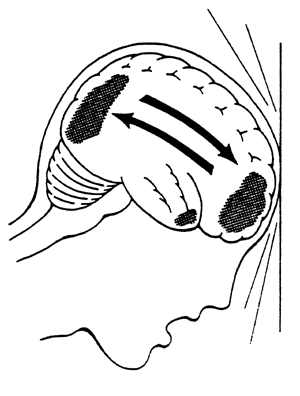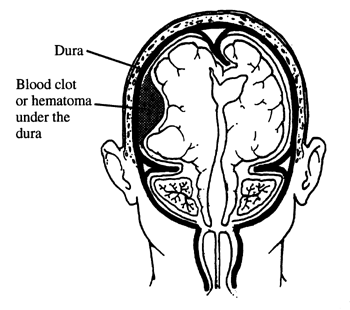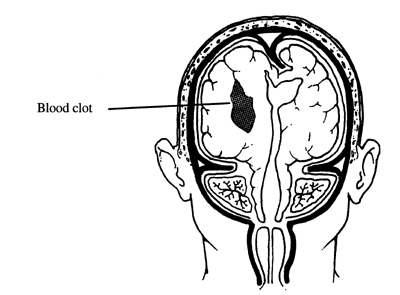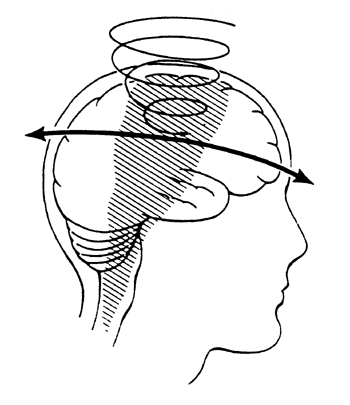What types of brain injuries may occur?
Even though the brain is well protected, it may be injured. Every injury is different. Most injuries are a result of bruising, bleeding, twisting, or tearing of brain tissue. Damage to the brain may occur at the time of injury. It may also develop after the injury due to swelling or further bleeding. Patients may have more than one type of brain injury.
Types of brain injuries
Epidural hematoma

A blood clot that forms between the skull and the top lining of the brain (dura). This blood clot can cause fast changes in the pressure inside the brain. Emergency surgery may be needed. The size of the clot will determine if surgery is needed.
Subdural hematoma

A blood clot that forms between the dura and the brain tissue. If this bleeding occurs quickly it is called an acute subdural hematoma. If it occurs slowly over several weeks, it is called a chronic subdural hematoma. The clot may cause increased pressure and may need to be removed surgically.
Intracerebral hemorrhage

A blood clot deep in the middle of the brain that is hard to remove. Pressure from this clot may cause damage to the brain. Surgery may be needed to relieve the pressure.
Diffuse axonal injury (DAI)

Damage to the pathways (axons) that connect the different areas of the brain. This occurs when there is twisting and turning of the brain tissue at the time of injury. The brain messages are slowed or lost. Treatment is aimed at managing swelling in the brain because torn axons can not be repaired.
Anoxic brain injury

An injury that results from a lack of oxygen to the brain. This is most often from a lack of blood flow due to injury or bleeding.